A Guide to Ethically Sourcing Textiles-According to LiLu
A Guide to Ethically Sourcing Textiles
According to LiLu
World DayAgainst Child Labor
At LiLu Interior we are committed to sustainability in our interior projects. This guide to ethically sourcing textiles is a strategy interior designers can use to create more sustainable and ethical practices. There are many facets to sustainable practices, from environmental concerns, to where finishes and furnishings are being produced to how they are being produced. Today we want to highlight one aspect of ethical and sustainable design and that is who is producing the products that go into your home.
June 12, 2020 was World Day Against Child Labor and at LiLu Interiors we are highlighting the concerns about child labor. Textiles and rugs are products that often produced using child labor. We want to highlight how you as a homeowner, can ensure that the textiles that come into your home have been produced in ethical ways and without child labor.
Where in the World Are Your Textiles Being Made
Interior designers can have an impact on the use of child labor across the world by sourcing our products responsibly.
In order to source products responsibly first you need a bit of information on how to source textiles that do not use child labor.
First, familiarize yourself with where across the child labor standards are being violated and know where your textiles are being produced. Here is one map showing the countries where child labor is most prevalent in the world today. If you want to look more closely at child labor across the world this Our World in Data page may be of interest. Keep in mind this link and map is about all child labor, not just that linked to the production of textiles. If your textiles are being made in a country that does not have child labor violations, you can feel confident in sourcing from that country.
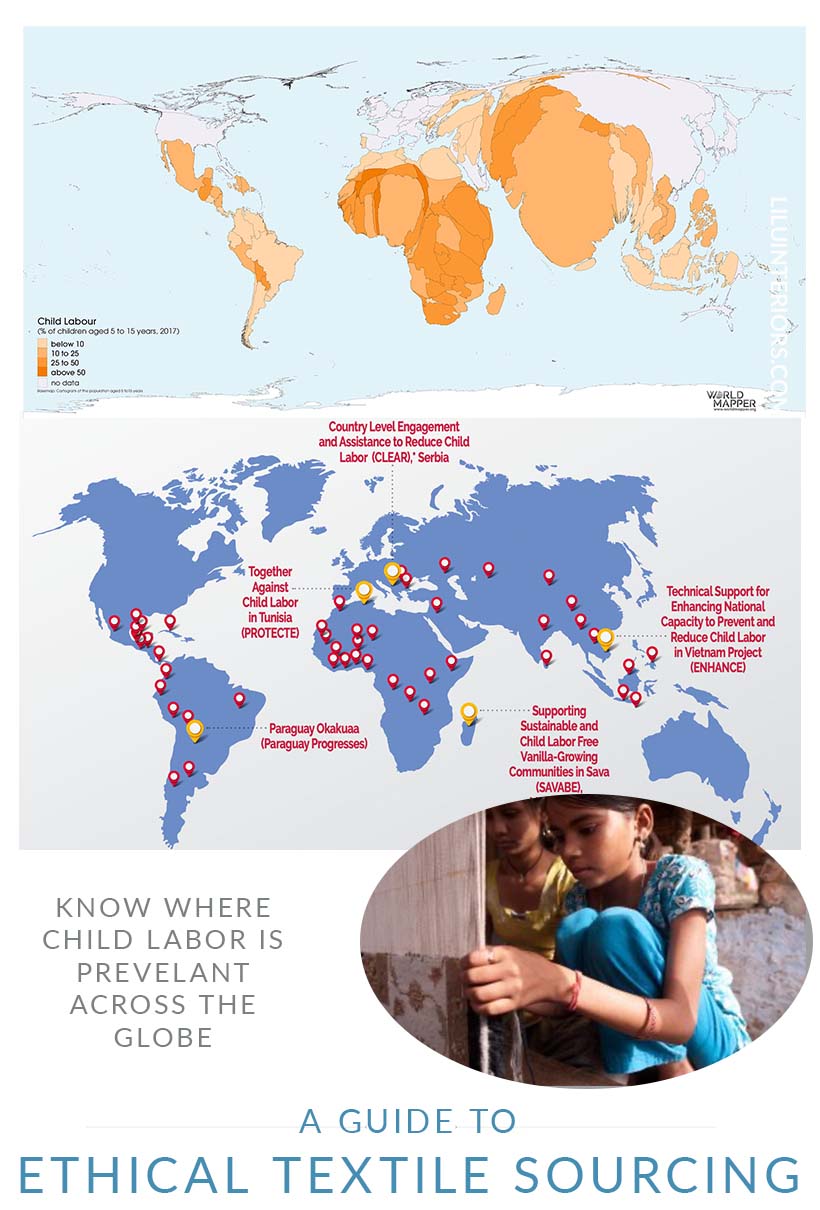
Look for Third-Party Certification
As an individual homeowner or designer, it would be impossible to verify the practices used in mills and factories across the globe. Instead, as with environmental sustainability and VOCs, we rely upon the organizations who vet suppliers and award them with a certification when certain standards are met.
Our guide to ethically sourcing textiles suggestion is looking for the logos of these certification programs that provide independent review of the ethical production of textiles.
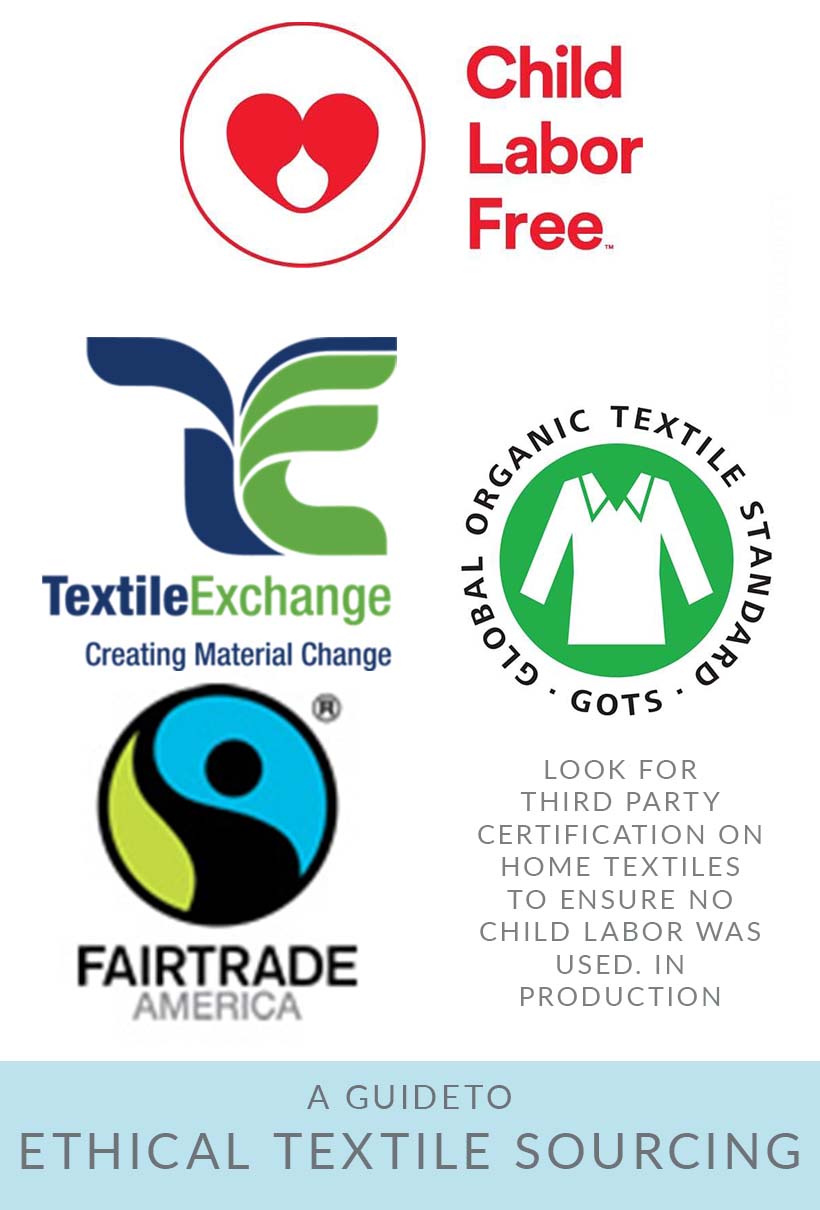
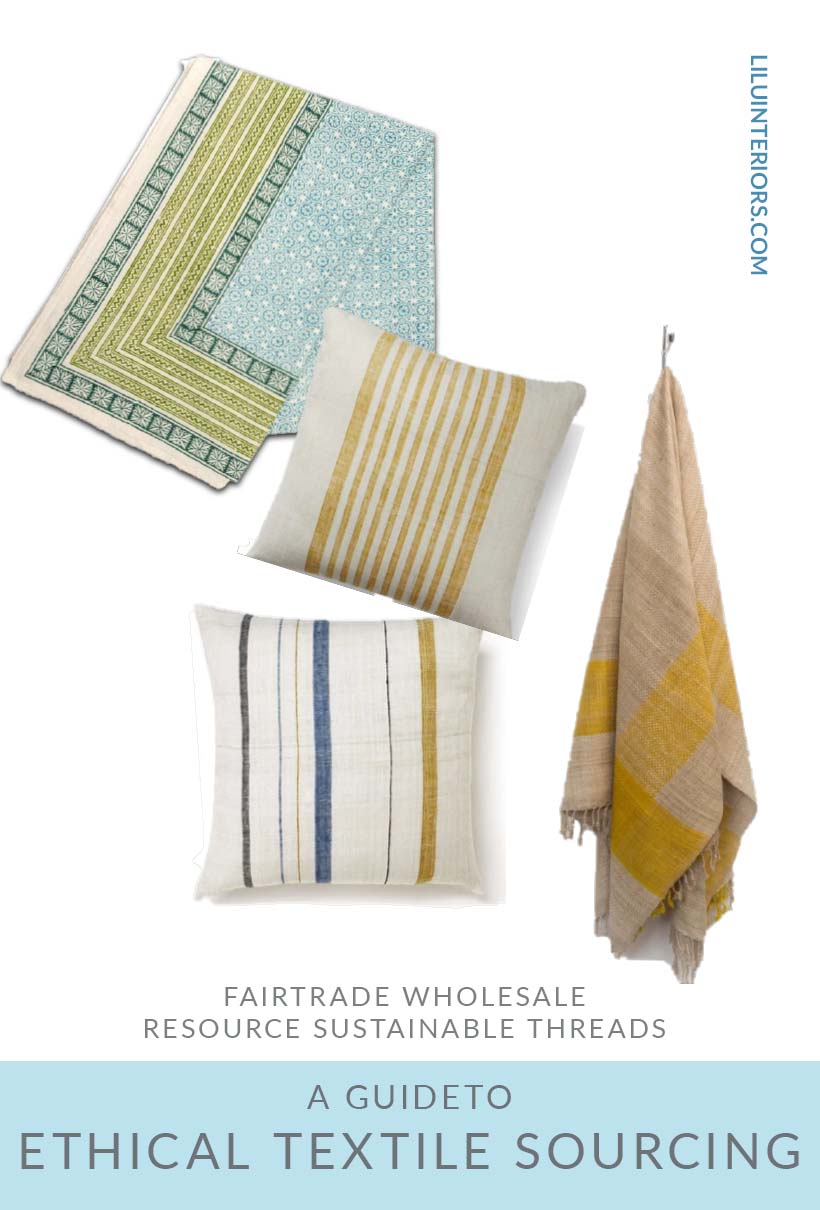
The Story of Rugs and Child Labor
Rugs are one item designers specify often that are frequently produced using child labor. Often human trafficking or bonded servitude is involved. The impact on a child’s live is hard to comprehend but reading one first-hand account will be enough for you to want to ensure the rugs you specify are certified to involve no child labor. Read The Story of Hem Moktan for one child’s story.
I have my own textile line, Sylvie and Mira and have Goodweave certification of my rugs to ensure no child or bonded labor is used in the production of the rugs. Hand-knotted and hand-tufted rugs are often made in regions where child labor is common. Looking for the Goodweave and Rugmark labels can help you confirm that no child labor was used in the making of your rug.
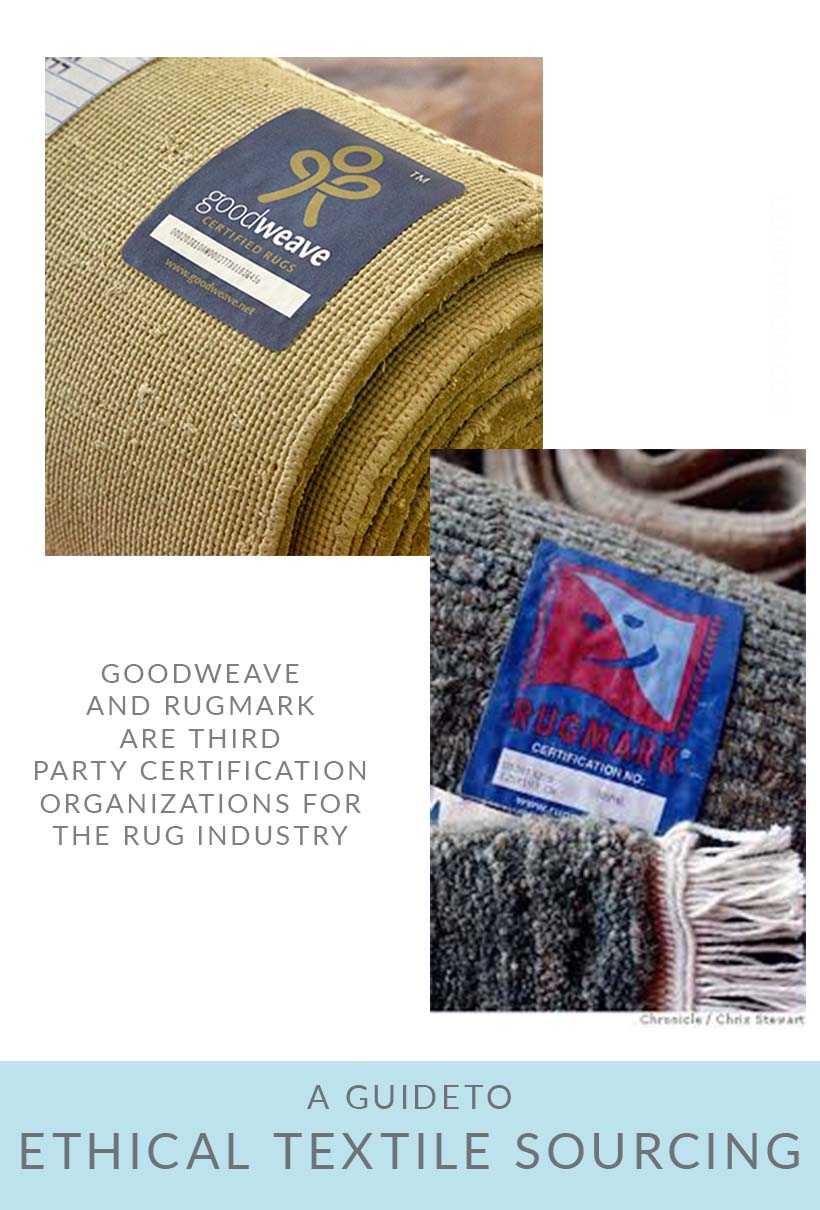
A Child's Life is Worth a Small Investment
Rugs and textiles made with adult labor may be more expensive but knowing that children weren’t taken advantage of to produce the beauty in your design work is worth it. Educating your clients on the issues involved is easy without going into the details when I ask clients if they are willing to pay more for an item certified to be free of child labor, no one has said no. We cannot correct all industry’s but asking our vendors who is producing the textiles we specify and looking for third party certification is an effective way for interior designers to ethically source textiles.
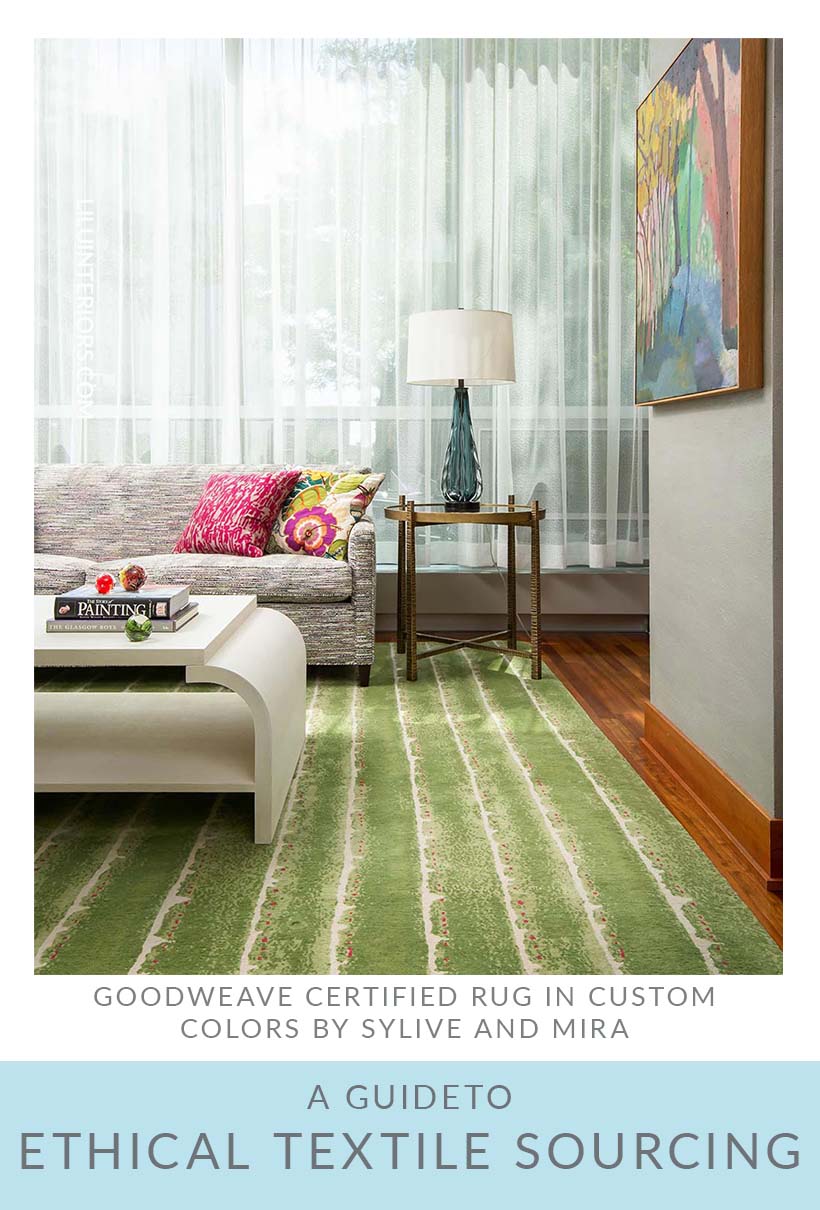

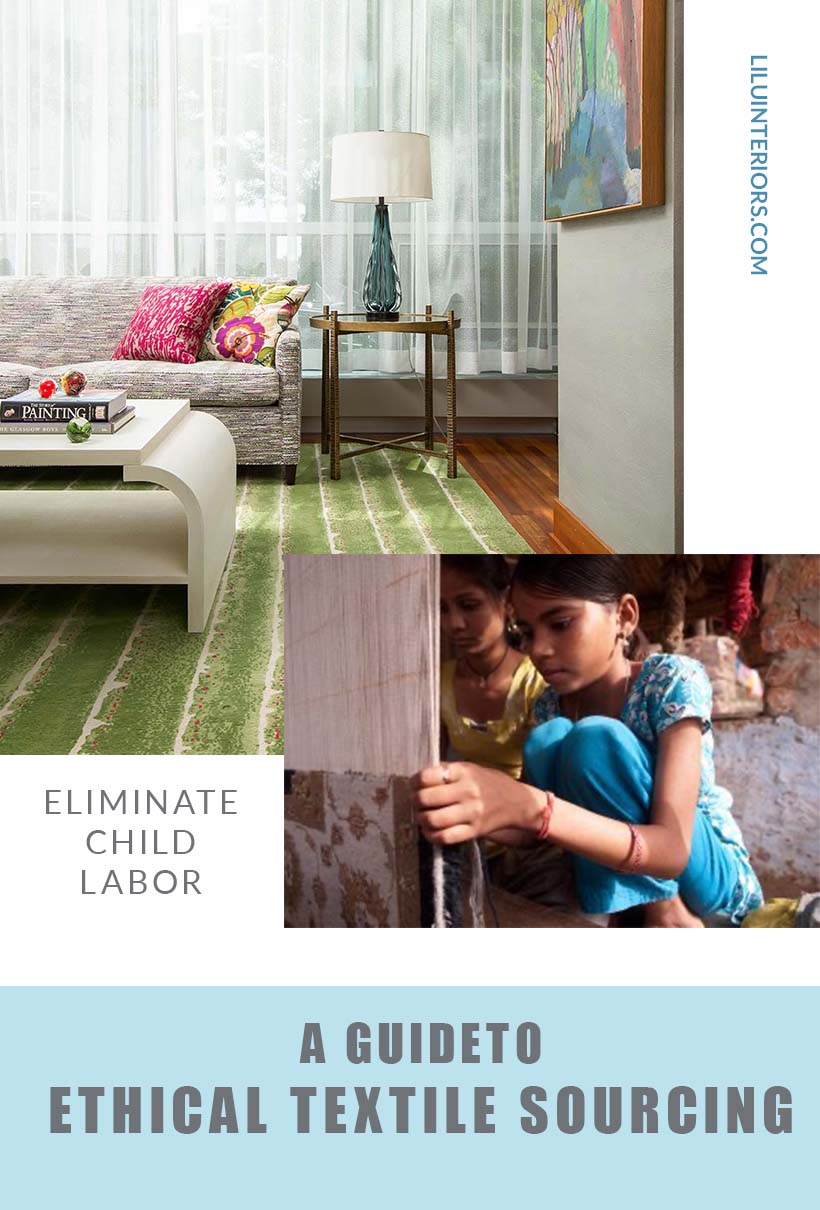
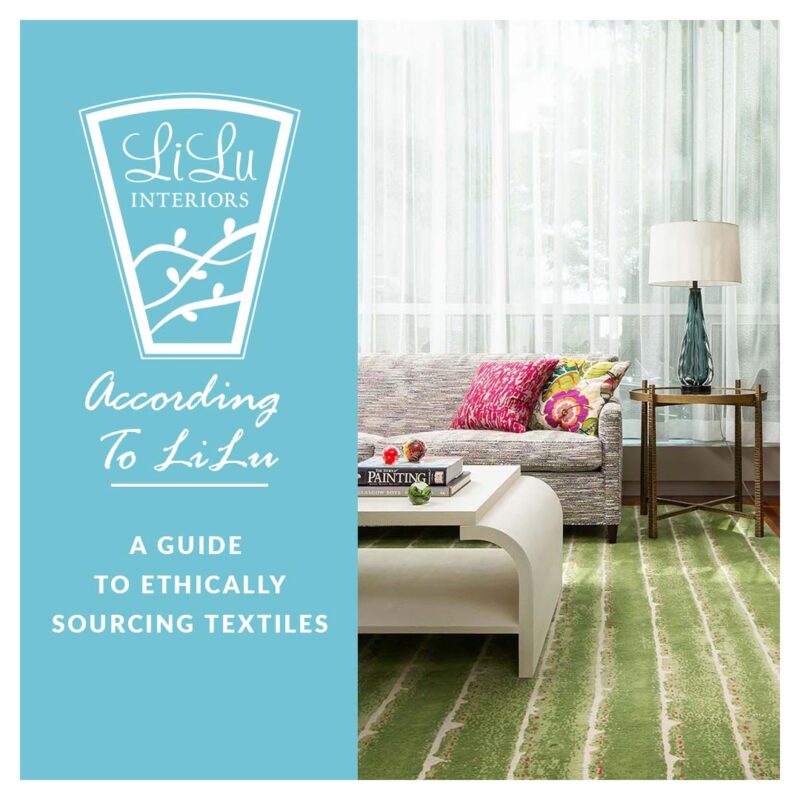





20 June, 2020 at 9:29 am
What an important topic to discuss, Lisa. Thank you for bringing this to my attention. I will be much more aware from now on.
20 June, 2020 at 11:44 am
Such good information and something to think about and pay attention to no matter what products we buy.
20 June, 2020 at 11:44 am
Excellent topic and helpful resources. Thank you, Lisa!
20 June, 2020 at 1:01 pm
This is so eye opening. I will certainly consider this the next time I order a custom rug. I am happy to know my two Sylvie and Mira rugs were created with using children!
20 June, 2020 at 9:21 pm
Thank you so much for sharing this, I had no idea and I will definitely be considering this from now on.
20 June, 2020 at 10:50 pm
Such an important topic! I am grateful for the resources and insight. Definitely worth reminding our industry that we are all responsible for and have the ability to make a difference! Will save for future reference. Great post!